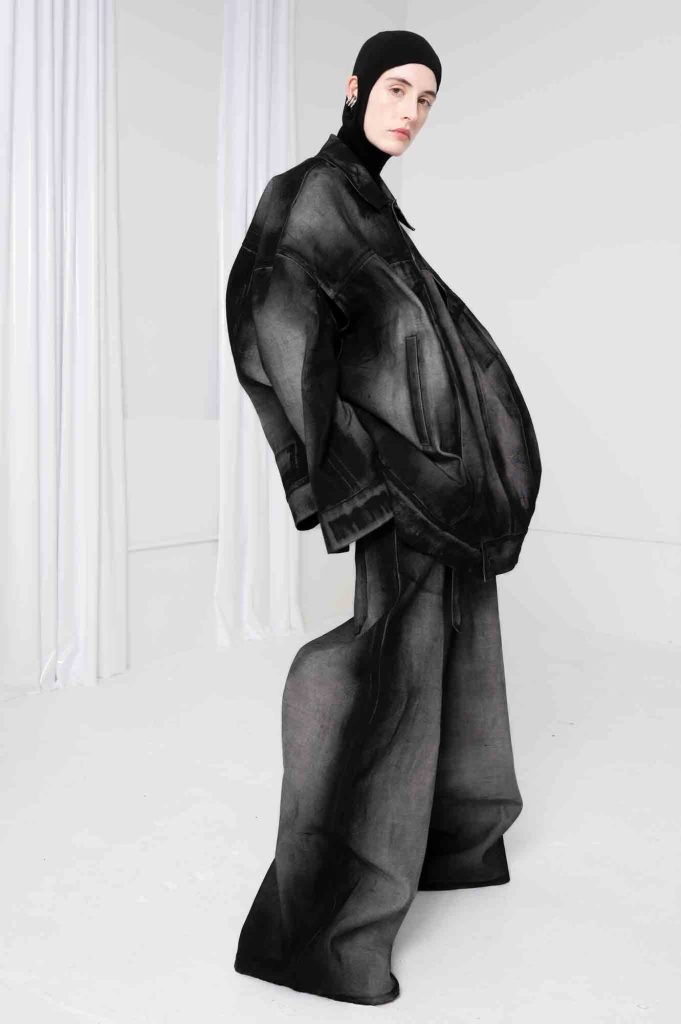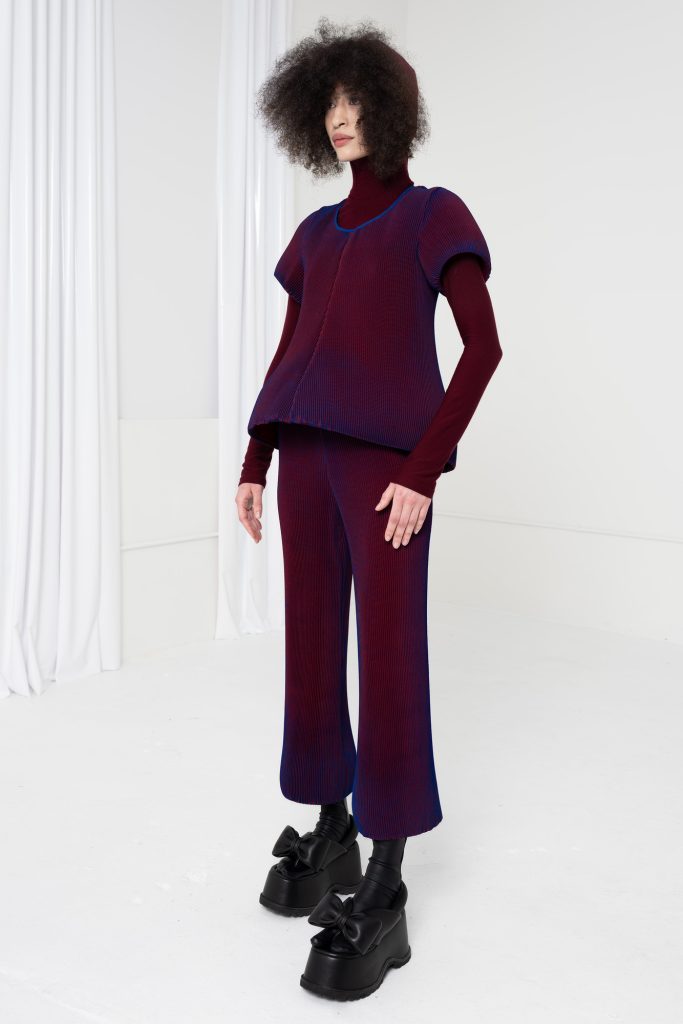

AW24
Photography by MICHAL PLATA
What does it mean to wear a sculpture? For Melitta Baumeister, it’s not just a question – it’s a mission. Known for her bold, architectural designs and groundbreaking use of materials like foam, Baumeister transforms garments into objects of art. Through her innovative vision, she pushes fashion beyond trends, challenging how we see, feel, and experience clothing itself.
hube: Your work often exists at the crossroads of fashion and sculpture, turning garments into almost architectural statements. Do you ever feel constrained by the body, or is it your playground for experimentation?
Melitta Baumeister: Without a doubt, the body comes with a set of requirements and preconceptions that can feel limiting. However, I rarely see these as obstacles. Instead, I view the body as a dynamic field full of challenges and opportunities to explore. My design process is very much a negotiation between the body and the fabric, which is why all designs start with materials draped onto the body. This approach contrasts with starting from a sketch, where there’s always the risk of forcing the material into shapes it doesn’t naturally want to take. By working with the body as a foundation, I allow the materials to guide the process.
The most important aspect, though, is that garments are meant to be worn, and that is what gives fashion its unique potential to be meaningful and transformational. It’s not so much the shape that lets us perceive something as art; it’s what it does to you.
h: The foam you use in your designs adds an unexpected softness to bold, voluminous silhouettes. Is this a deliberate attempt to challenge our preconceptions of what strength and vulnerability look like in fashion?
MB: I enjoy working with materials that naturally hold their shape or behave in distinctive ways, and foam is a perfect example of this. I love the illusion of something that appears architectural and bold being surprisingly soft and wearable. Seeing this in the context of vulnerability is exciting, even though it’s not a primary concern during the design process.
The concept of decoration also comes to mind, particularly with motifs often associated with making someone appear more girly, soft, or vulnerable. These are themes I tend to avoid in my work. Instead, the foam acts as a translator, transforming traditionally ‘cute’ elements like ruffles into strong, sculptural statements. It’s this tension between expectation and reality that I find most intriguing.

